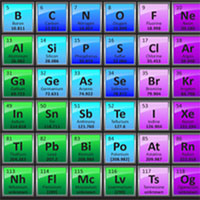Many people have tried and many have failed to find a way to get gold from the oceans.
In 1872, English chemist Edward Sonstadt published a report on the existence of gold in seawater . Since then, Sonstadt’s discovery has inspired many, from genuine scientists to scammers, to find a way to extract gold from this inexhaustible source of water.
Many researchers have tried to find a way to quantify the amount of gold in seawater. But finding the exact number is not easy, because the concentration of gold in sea water is very low (it is estimated that one part of gold will contain one trillion parts of water).
A study published in 1988 in the Journal of Applied Geochemistry measured gold concentrations in seawater samples taken from the Pacific Ocean, giving it a ratio of 0.03 parts per trillion. Earlier studies found a higher rate, around 1 in a trillion.
This difference can be caused by two reasons:

Finding the exact amount of gold in seawater is not easy.
According to NOAA’s National Ocean Service, Earth currently has about 333 million cubic miles of ocean water. One cubic mile is equal to 4.17*109 cubic meters. Converting that out, we get 1.39*1018 cubic meters of water in the oceans. Meanwhile, the density of water is 1,000kg/cubic meter, which means that the Earth is carrying 1.39*1021 kg of sea water.
Assuming 1) the concentration of gold in seawater is 1 part per trillion, 2) the concentration is the same in all seas, and 3) the concentration can be expressed in mass, we can calculate the amount of gold in the oceans. ocean in the following way:
Because the amount of gold present in seawater is very small, not to mention that there are many other impurities in the water from the surrounding environment, seawater samples need to be treated before being analyzed.
Concentration is the process of concentrating trace amounts of gold in test samples, so that the resulting product is within the optimum range for most analytical methods. It can be done in the following ways:
The gold is then separated from other substances or materials that coexist in the water sample. Some suitable methods to use are filtration and centrifugation. After this process, we can find out the amount of gold by applying techniques specific to the measurement of substances at very low concentrations, including:
It must be remembered, though, that even if there was a great deal of gold dissolved in the waters of the oceans, the cost of extracting this wealth from seawater could be more expensive than its value. Okay.

